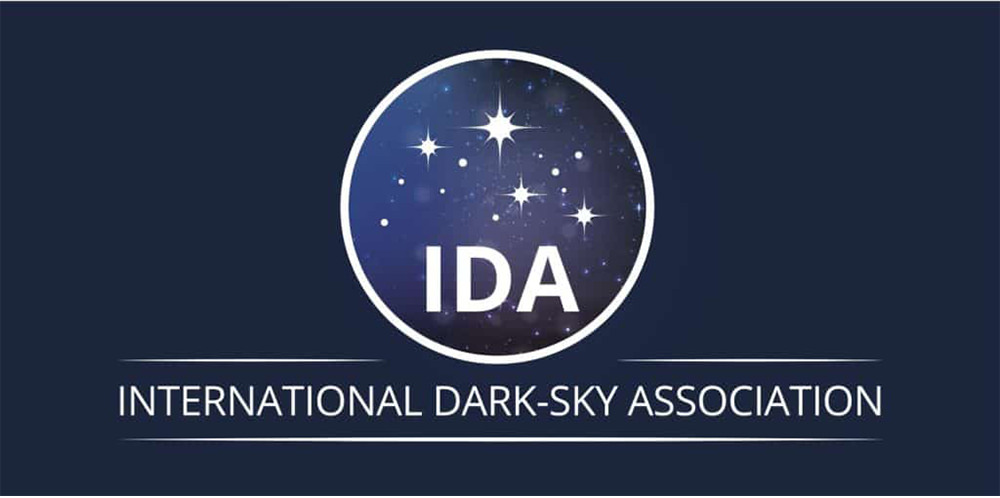Who are International Dark-Sky Association?
In Wikipedia, you’ll find out:
The International Dark-Sky Association (IDA) is a United States-based non-profit organization incorporated in 1988 by founders David Crawford, a professional astronomer, and Tim Hunter, a physician and amateur astronomer.

What purpose does IDA serve?
The mission of the IDA is "to preserve and protect the nighttime environment and our heritage of dark skies through quality outdoor lighting."
So basically, the IDA is set up on the background of the rising issue of lighting pollution and calls for nighttime environment protection.
Due to the usage of artificial lighting since industrial revolution, night lights have been installed and used in every corner of our civilized society. Before LED (light emitting diode) was invented, incandescent lamp and HPS and HID lamps were mostly used, although these lights do not have high efficiency, they still created the first phase of lighting pollution.
Then, when the LED (light emitting diode) technology came out, our whole world has been transferring to use LED lights. As Yahoo Finance forecasts, The LED Lighting Market size is estimated at USD 100.20 billion in 2023. You know what that means, billions more LED lights will be used! Although the LED lighting market is divided into many different sectors, for outdoor lighting, that are still a huge number of fixtures.
For most governments, their goal of LED conversion is to retrofit traditional incandescent lamps and HPS/HID lamps to save energy, so seldom would they consider light pollution, let alone Dark Sky protection. Especially for under developed and developing countries, with the large-scale usage of LED lights, most often the lights are not Dark Sky compliant, hence generating a great issue of light pollution and lighting trespass.
Nowadays, as people are starting to realize the seriousness of this rising issue, there will be more and more customers tending to find quality lights that are compliant with nighttime environments and Dark Sky protection.
Notice that when customers ask you to purchase outdoor LED lights, more “Dark Sky Compliance” requirements are being referred. That’s also the case AGC is experiencing, we have received more requests for Dark Sky compliance this year than previous years, particularly for urban lighting fixtures.
Lighting requirements for IDA’s compliance application
We recently customized several products to be Dark Sky compliant, and the following are the detailed requirements for IDA’s compliance application:
General
Approved fixtures shall employ warm-toned (3000k and lower) white light sources or may employ amber light sources or filtered LED light sources. If other CCTs or mounting options are available for the luminaire. a notation needs to be made on the web page, spec sheets, and order forms that 3000k or warmer, and fixed mounts must be ordered for IDA certification compliance.
For Commercial Luminaires
- photometric files are needed to validate performance characteristics.
- There is an uplight allowance of 0.5% of total output or 50 lumens; whichever is lower, with no more than 10 lumens in 90-100 degree UL zone. Allowable uplight as a byproduct of the structure and not the source.
- Street and area lights must have a pre or post-installation shielding option.
- Luminaires are required to have fixed mounts to ensure they are mounted as photometered. There can be up to + or- 10-degree adjustment for leveling if needed.
- Luminaires must have dimming capability to 10% of full rating.
- Light sources shall have a maximum correlated color temperature of 3000K.
- Luminaires must have Safety Certification by an independent laboratory.
For Residential Luminaires
- Uplight allowance: Not to exceed 50 lumens from source reflection or support structures. Source is not visible from the horizontal plane, i.e., the fixture is fully shielded.
- Require fixed mounts to ensure luminaire is mounted as photometered.
- Light sources shall have a maximum correlated color temperature of 3000K.
- Safety Lab Certification
Innovation
This is to encourage a Best in Class lighting development that significantly reduces light pollution and nocturnal habitat disruption.
- No Uplight allowance, BUG rating, U-0
- Dimmable to 1% of full rating
- Smart controls that meet program purposes
- No more than 7% of visible emissions in 380-520nm
To be honest, for the downward direct lighting fixtures, it is not that hard to get IDA’s Dark Sky compliance. Because first of all the light are literally all distributed downwards, second is it is also relatively easy for downward lighting fixtures to customize Dark Sky Shields.
So for the new urban lighting products we are currently developing, we are paying more attention to this and they will be Dark Sky compliant for in-needing customers.
Related video:












